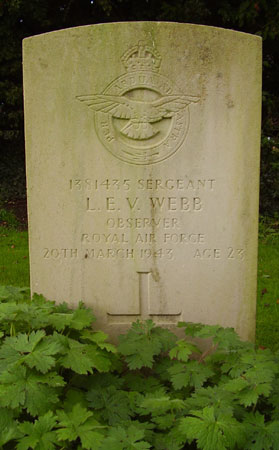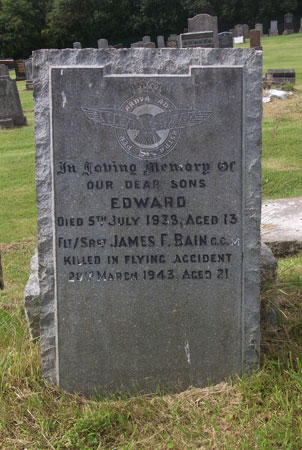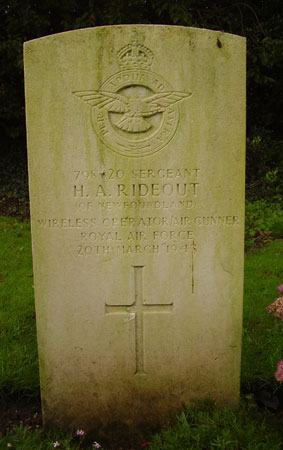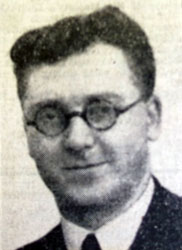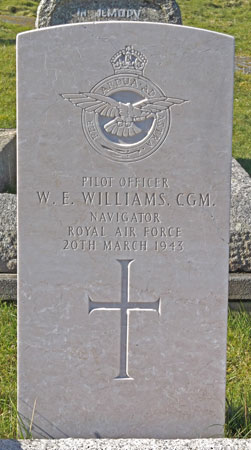Lancaster ED446 at Atwick, East Yorkshire.
On 20th March 1943 the crew of this 101 Squadron aircraft were flying the aircraft over the Skipsea Gunnery ranges to test the guns. At 11.30hrs the aircraft was flying very low while the test was being carried out and upon making a low pass the aircraft clipped a concrete pill-box on the top of the small cliffs above Atwick beach. This impact caused the Lancaster to break up and the aircraft partly crashed on the cliffs and the beach below. The coastline along this part of the Yorkshire coast has eroded much since the War and the crash site is now probably out to sea. All other accounts of this incident that I have located with the exception of one list that all on board the Lancaster were killed in the crash, however Catfoss' ORB mention this incident and state the P/O Williams actually survived the initial crash but sadly died later of his injuries and also that an air gunner survived. I list the surviving air gunner lastly on the list below; it does actually make more sense for the Lancaster to be testing the guns with two air gunners present to occupy both turrets.
Lancaster ED446 was built to contract B.69274/40 by A.V.Roe and Co.Ltd. at Chadderton and was awaiting collection in December 1942. It was taken on charge by 101 Squadron at Holme on Spalding Moor on 29th December 1942. As a result of the crash at Atwick on 20th March 1943 Cat.E2/FA Burnt damage was the damage assessment and it was written off. It was then struck off charge on 1st April 1943 having flown just over 93 hours in total.
Pilot - Sgt Ivan Henry Hazard CGM RAFVR (1313768), aged 22, of Oxford. Buried Wolvercote Cemetery, Oxford.
Pilot - F/O Raymond Henry Thompson RAFVR (119076), aged 23, of Spalding. Buried Spalding Cemetery, Lincolnshire.
Flight Engineer - Sgt James Fortune Bain CGM RAF (654077), aged 21, of Rutherglen. Buried Cambuslang (Westburn) Cemetery, Lanarkshire.
Navigator - P/O William Ernest Williams CGM RAFVR (144449), aged ? Of Llandudno. Buried Llandudno (Gt Orme's Head) Cemetery, Caernarvonshire.
Navigator - F/O William Corfield Morris RAFVR (120570), aged 32, of Crosby, Liverpool. Buried Thornton Garden of Rest, Lancashire.
Observer - Sgt Lawrence Edward Victor Webb RAFVR (1381435), aged 23, of Upper Tooting, London. Buried Brandesburton Churchyard, Yorkshire.
Wireless Operator / Air Gunner - Sgt Harry Alfred Rideout RAFVR (798620), aged 21. Of Newfoundland. Buried Brandesburton Churchyard, Yorkshire.
Air Gunner - Sgt Terence Jenkins RAFVR (1314715), aged 22, of Nantyffyllon, Maesteg, Glamorganshire. Buried Maesteg Cemetery, Glamorganshire.
Air Gunner - P/O Robert Matthews RAFVR (130930). Injured.
In August 2014 I visited Atwick beach area to photograph the general area of the crash, as shown above. In walking along the beach I found a few small fragments of what are probably little bits of the aircraft.
Given the cliffs at Atwick have eroded a lot since 1943 the pill box the aircraft struck may have been lost to the sea. On the beach are the remains of possibly two pill boxes in the right area for the one that the Lancaster must have struck. There are still at least two slightly inland nearer Atwick but below the cliff top level and both seem in too good condition to have been struck by the aircraft. While I have no evidence to prove it I would place my bets on the remains on the beach as being part of one pill box the aircraft struck.
A couple of small fragments I found on the beach in 2014.
Of those named above Hazard (pictured above), Bain, Williams were awarded their CGMs for their actions on 14th February 1943 flying Lancaster ED377 with 101 Squadron. Notification of their awards were printed in the London Gazette on 23rd March 1943, two other members of their then crew were not present when ED446 crashed at Atwick as they were still being treated for their injuries. Their joint citation tells the story...
“On the night of 14th February 1943, Pilot Officer F.W.Gates (awarded the D.S.O. in the same Gazette), Flight Sergeant Dove, and Sergeants Williams, Bain and Airey were members of the crew captained by Sergeant Hazard, which was detailed to attack Milan. Whilst over the target area, the aircraft was attacked by an enemy fighter at close range. Its gunfire exploded some incendiary bombs which had failed to release and a fire quickly developed in the bomber. The fuselage became a mass of flames reaching through the mid-upper turret manned by Flight Sergeant Dove. Ammunition in the turret boxes and ducts commenced to explode in all directions. In the face of an appalling situation, Flight Sergeant Dove coolly remained at his post. Although he was burned about the hands and face, he manned his guns with grim resolution, skill and accuracy. He delivered a devastating burst at the attacker, which had already been engaged and hit by the rear gunner and succeeded in destroying it. Disregarding the roaring flames, he then descended from his turret and then went to the assistance of Sergeant Airey, the rear gunner, who had been wounded, and extricated him from the rear turret. The situation had become extremely critical and Sergeant Hazard ordered the crew to abandon aircraft. When informed that one of his comrades was helpless he decided, in spite of the grave risk involved, to attempt a forced landing. Meanwhile, Pilot Officer Gates, assisted by Sergeants Williams and Bain bravely tackled the fire with extinguishers and succeeded in getting it under control. The aircraft was now down to 800 feet but, as the fire had subsided, Sergeant Hazard quickly decided to attempt to fly the badly damaged bomber home. He regained height and displaying fine airmanship crossed the Alps in safety, although one engine failed while so doing. On the remainder of the journey Pilot Officer Gates rendered valuable assistance to his captain and frequently ministered to his wounded comrades although this necessitated clambering over the hole in the floor of the aircraft in darkness. Aided by the skilful navigation of Sergeant Williams and good work by Sergeant Bain, the Flight Engineer, Sergeant Hazard succeeded in flying the seriously damaged aircraft back to this country. In circumstances of the greatest danger, the aircraft crew displayed courage, fortitude and devotion to duty in keeping with the highest traditions of the Royal Air Force.”
F/Sgt Dove - who had nothing to do with Lancaster ED446 at Atwick as he was bring treated for his injuries - was originally recommended for the Victoria Cross and the original recommendation for the Victoria Cross stated..
"On the night of 14th February 1943, the Lancaster aircraft in which Flight Sergeant Dove was the Mid-Upper Gunner, took part in an
operational sortie to Milan. Shortly after bombing had been carried out this aircraft was attacked at 200 yards range by an enemy night
fighter which opened fire and ignited 4 x 30lb. incendiaries still in the bomb bay of the Lancaster. The Rear Gunner, although wounded
in the leg, had replied and succeeded in setting the engine of the enemy fighter on fire. The Lancaster was already on fire amidships and
the flames had rapidly risen up to the mid-upper turret where Flight Sergeant Dove remained at his post although burnt about the face and
hands. In spite of this he handled his gun with cool determination and got in a good burst as the enemy aircraft turned away in a climbing
turn to starboard, as a result of which it dived in flames and was destroyed. Hearing over the intercom that the Rear Gunner was wounded,
Flight Sergeant Dove got down from his turret into the flames which were exploding ammunition in the ducts, and made his way to the rear
turret. Despite his own injuries, and the flaming inferno behind him, and the fact that his inter-com and oxygen was unplugged, he succeeded
in extricating the Rear Gunner. Flight Sergeant Dove did not leave his comrade to attend to his own injuries until the fire was subdued and
he was relieved by another member of the crew. Nothing was known of Flight Sergeant Dove’s injuries of which he made no mention until after
landing at base. By his determination, courageous action and fearless disregard for danger this N.C.O. displayed gallantry of the highest order."
The remarks of his Station Commander stated that.."By his cool, calm and determined valour, Flight Sergeant Dove has added yet another
act of heroism to the epic of the Royal Air Force. In spite of flames, which were roaring through the mid-upper turret, he displayed a
complete disregard of his own safety in a perilous situation and continued to man his guns with such grim determination, and to handle them
with such accuracy, that the enemy fighter burst into flames and undoubtedly was destroyed. Thereafter, he descended from his turret into
the flames which must, by now, have seemed to him inextinguishable, to attend to the Rear-Gunner. Despite the fact that to attach his parachute
and bale out through the aft door of the fuselage was a simple matter and a ready escape from the raging fire, he deliberately abandoned this
chance of saving his own life and proceeded past the door to extricate the Rear-Gunner from his turret. This he did successfully regardless of
his own suffering from second degree burns about his face and hands. His object achieved, he rendered valiant assistance to the remainder of
the crew in subduing the flames. Thence onwards, Flight Sergeant Dove displayed fortitude of the highest order by making no mention of his injuries
to his Captain or crew, so that their attention should not be distracted from their duties, but remained quietly unattended on the rest bed until
a safe landing had been completed. I regard Flight Sergeant Dove’s indomitable courage, skill and fortitude as exceptional, and one worthy of the
award of the Victoria Cross.’
Lawrence Webb's gravestone at Brandesburton Churchyard and James Bain's in Cambuslang Cemetery, Lanarkshire.
Both Sgt Rideout and Sgt Jenkins had survived the accident to Lancaster ED374 at Holme on Spalding Moor in mid-Febrary 1943.
William Williams enlisted into the RAF in 1941, after training he had initially flown with Coastal Command before joining Bomber Command. He received a commission on 19th January 1943 to the rank of P/O on probation (emergency).


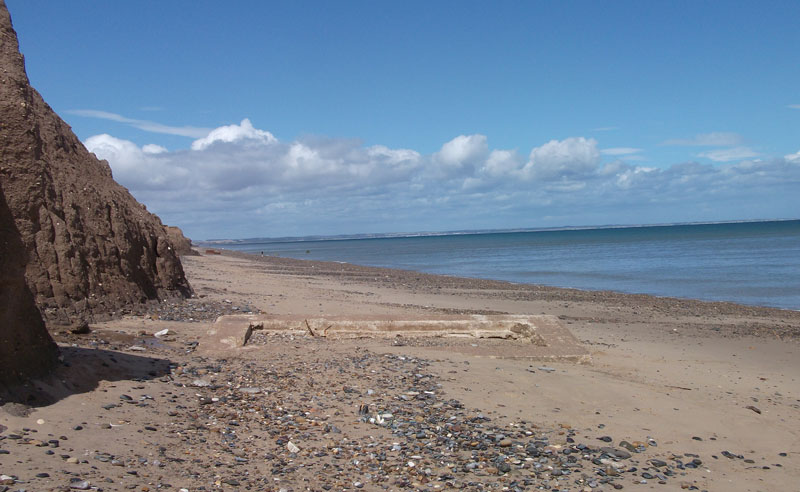
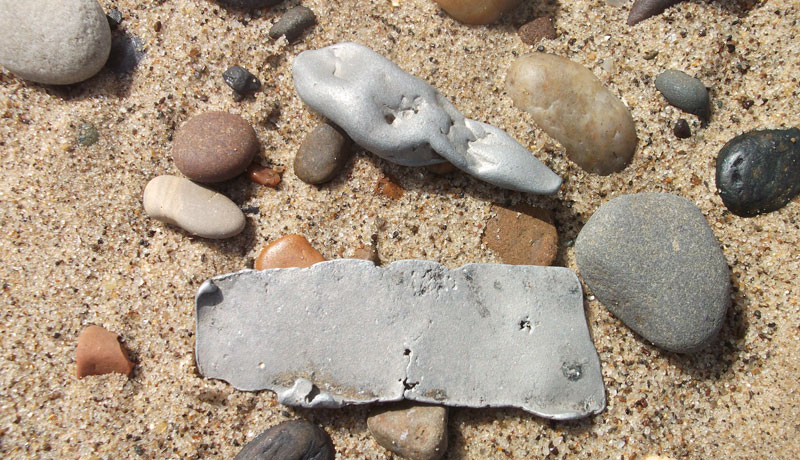
I will list the survivor first in the series biographies on this webpage as it will be easier. Robert Matthews received a commission to the rank of P/O on probation (emergency) on 9th October 1942 and was promoted to F/O on probation (war subs) on 9th April 1943. He flew as the regular rear gunner with Bowyer with 101 Squadron between 9th January 1943 and 11th March 1943. After this he did not flew operationally with 101 Squadron again. For service with 101 Squadron he was awarded the DFC, Gazetted on 18th January 1944. He was later posted to 31 SAAF Squadron and killed on 4th June 1944 flying in Liberator EW197 to bomb German shipping at Crete, the aircraft was shot down by anti-aircraft fire and crashed into the sea. His body was never found and he is commemorated on the Alamein Memorial. He was thirty years old. He was married with his wife living in Manaccan, Cornwall.
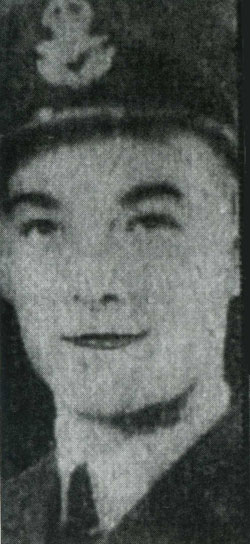
Raymond Thompson received a commission on 24th January 1942 to the rank of P/O on probation (emergency) and rose to F/O on probation (war subs) on 1st October 1942.
William Morris received a commission on 19th January 1942 to the rank of P/O on probation (emergency) and rose to F/O on probation (war subs) on 1st October 1942.
